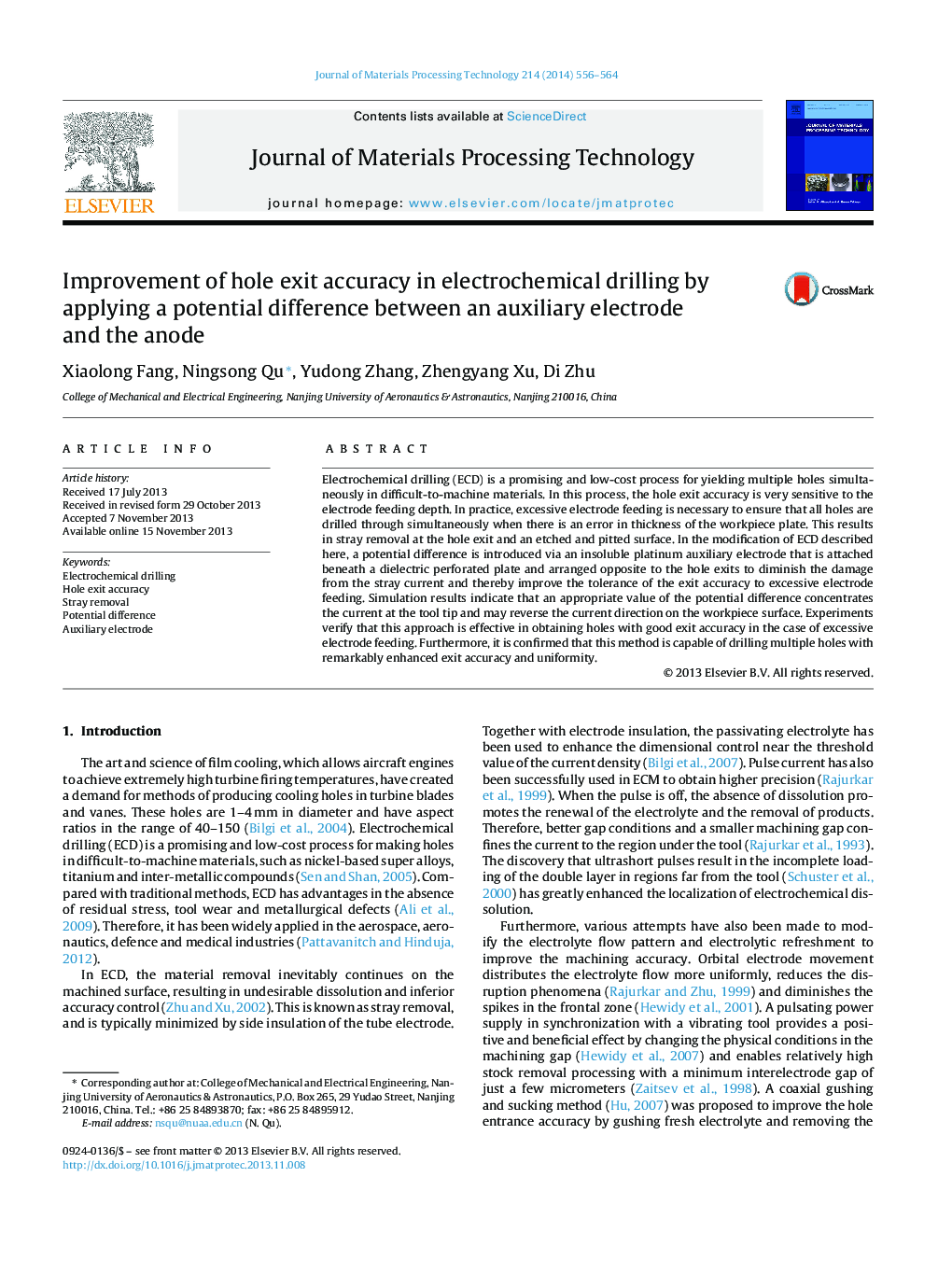| Article ID | Journal | Published Year | Pages | File Type |
|---|---|---|---|---|
| 10417455 | Journal of Materials Processing Technology | 2014 | 9 Pages |
Abstract
Electrochemical drilling (ECD) is a promising and low-cost process for yielding multiple holes simultaneously in difficult-to-machine materials. In this process, the hole exit accuracy is very sensitive to the electrode feeding depth. In practice, excessive electrode feeding is necessary to ensure that all holes are drilled through simultaneously when there is an error in thickness of the workpiece plate. This results in stray removal at the hole exit and an etched and pitted surface. In the modification of ECD described here, a potential difference is introduced via an insoluble platinum auxiliary electrode that is attached beneath a dielectric perforated plate and arranged opposite to the hole exits to diminish the damage from the stray current and thereby improve the tolerance of the exit accuracy to excessive electrode feeding. Simulation results indicate that an appropriate value of the potential difference concentrates the current at the tool tip and may reverse the current direction on the workpiece surface. Experiments verify that this approach is effective in obtaining holes with good exit accuracy in the case of excessive electrode feeding. Furthermore, it is confirmed that this method is capable of drilling multiple holes with remarkably enhanced exit accuracy and uniformity.
Related Topics
Physical Sciences and Engineering
Engineering
Industrial and Manufacturing Engineering
Authors
Xiaolong Fang, Ningsong Qu, Yudong Zhang, Zhengyang Xu, Di Zhu,
